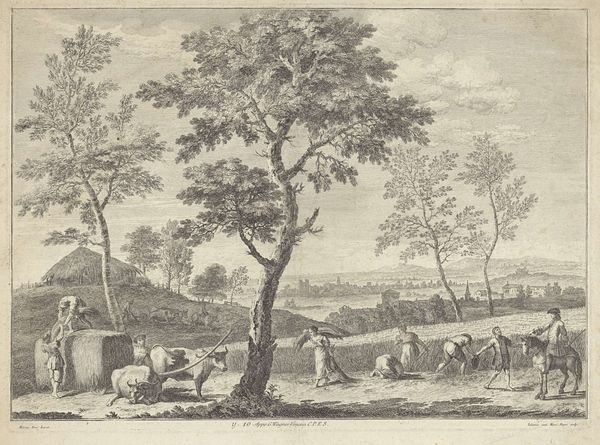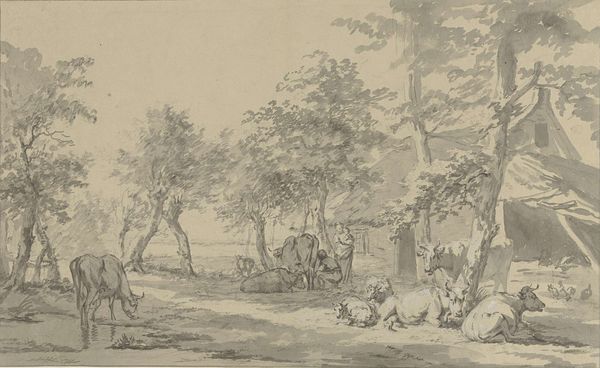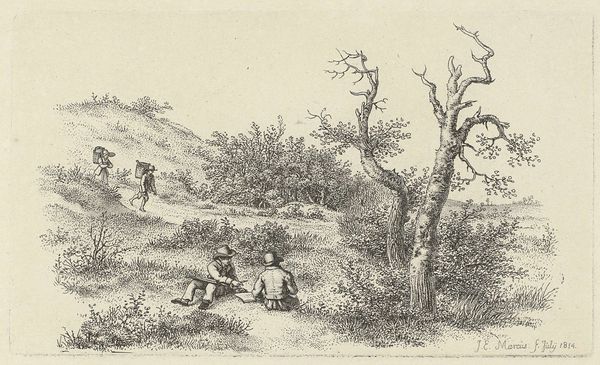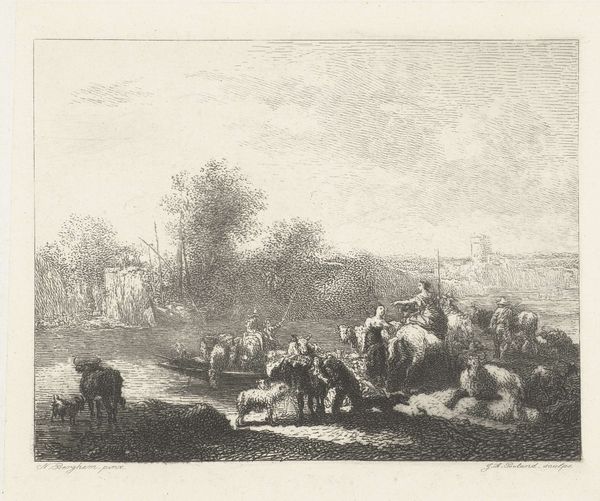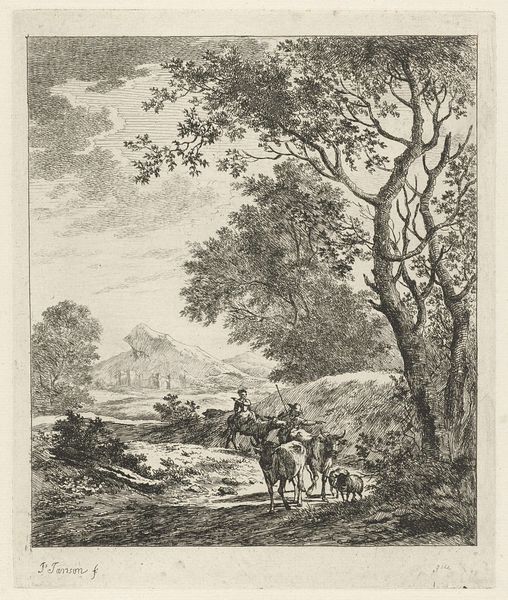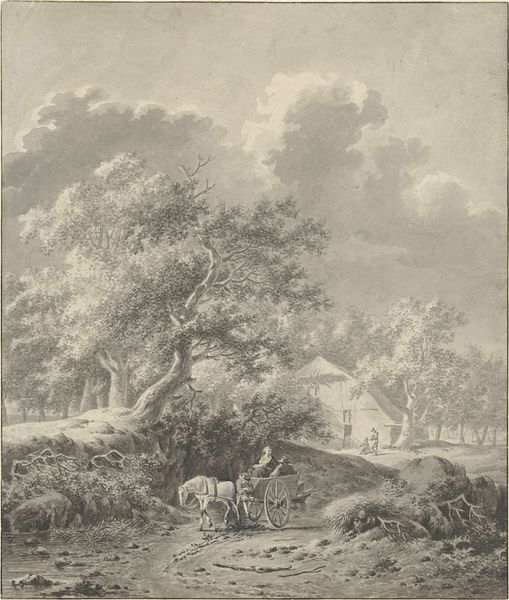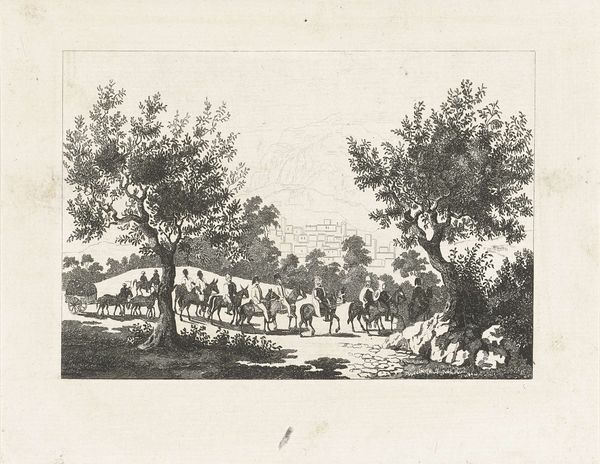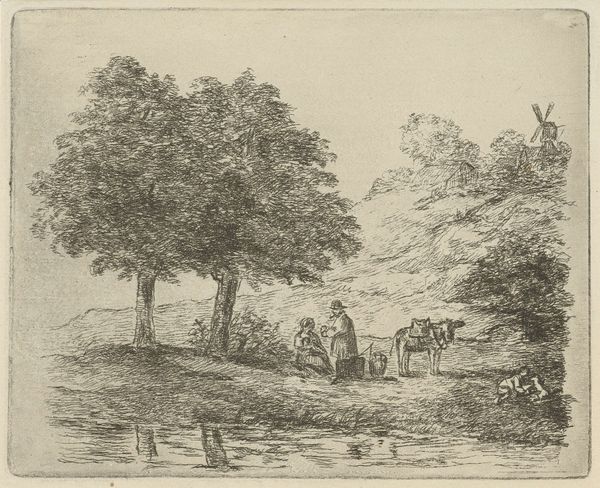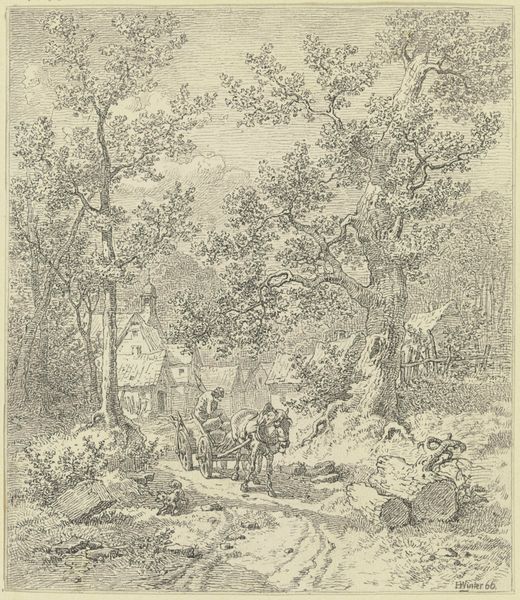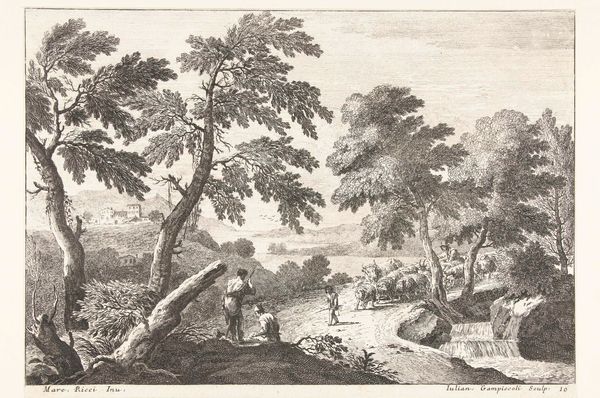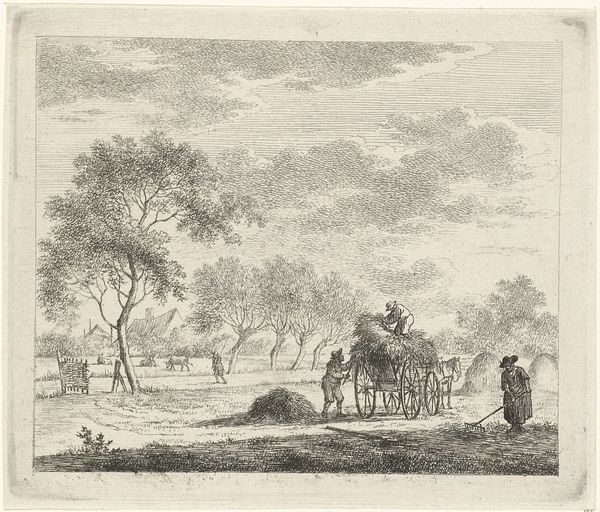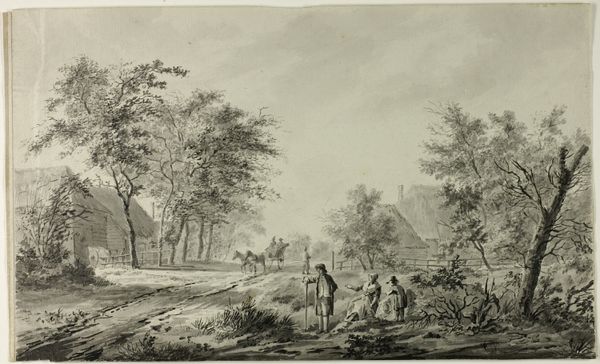
drawing, print, paper, engraving
#
drawing
#
dutch-golden-age
# print
#
landscape
#
paper
#
road
#
child
#
group-portraits
#
horse
#
cityscape
#
genre-painting
#
engraving
Dimensions: height 178 mm, width 152 mm
Copyright: Rijks Museum: Open Domain
Curator: Here we have "Gezelschap met twee paarden lopend op een landweg," or "Company with Two Horses Walking on a Country Road," attributed to Isaac Weissenbruch, though the dating is somewhat broad, between 1836 and 1912. It is an engraving printed on paper, currently held in the collection of the Rijksmuseum. Editor: My first impression is of a carefully observed, peaceful moment. Despite the activity, there's a real stillness created by the sharp contrast between light and shadow, the balance in composition...almost bucolic. Curator: Yes, Weissenbruch excelled in capturing that atmospheric stillness, partly through his meticulous technique. Observe the engraver's careful layering of lines to construct form and evoke light—notice how the diagonal hatching on the road surface seems to meet the cross-hatched patterns of tree trunks. It's quite complex. Editor: And within that complex system of lines and shades we also have more direct representations of a journey, like that woman carrying a load on her head – what might seem to us now an archaic way of carrying. Notice the two horses here, the cow being milked off to the side there – and that lone child by the woman’s side? Curator: Good eyes! That grouping immediately pulls our focus toward familial, workaday life, evoking themes deeply rooted in agrarian life that persists even today. We have the man on horseback – the master maybe – the child at the mother’s side… Editor: I think also how class differences here are underscored by placement, with the rider and seated spectators slightly off from the direct path, subtly alluding to dynamics that have persisted across centuries…it invites reflections on hierarchy but rendered in the soft language of naturalism. Curator: That's precisely it. The technique may be rooted in observing tonal qualities but serves the additional symbolic weight that history burdens it with – how these families occupy that road suggests permanence...a world where time moves slowly. Editor: Thinking of today’s perspective shifts and migrations, contemplating this journey on a single road provokes reflection. A journey and image rendered for both aesthetics and deep, quiet social resonance. Curator: Indeed. In viewing how form and content work in Weissenbruch's composition, one can reflect on a long lineage of symbols, from simple landscapes to our modern complex world. Editor: The image whispers possibilities—the stories linger for consideration of how this image persists even in contemporary visual imagery and lived experiences.
Comments
No comments
Be the first to comment and join the conversation on the ultimate creative platform.
